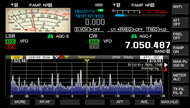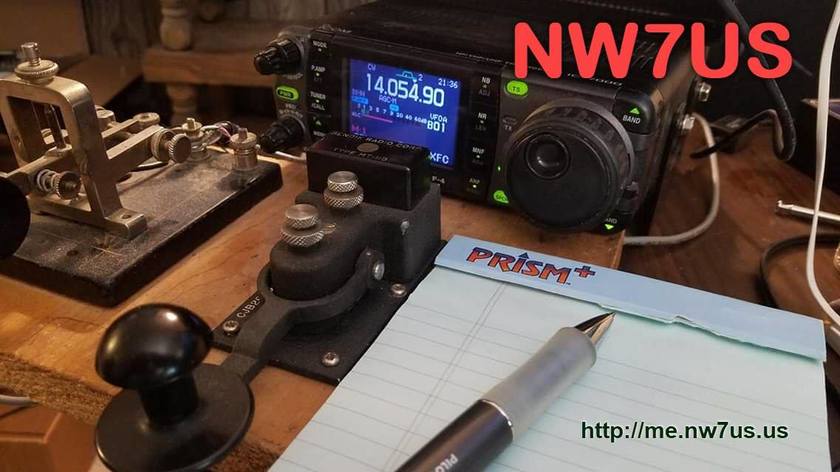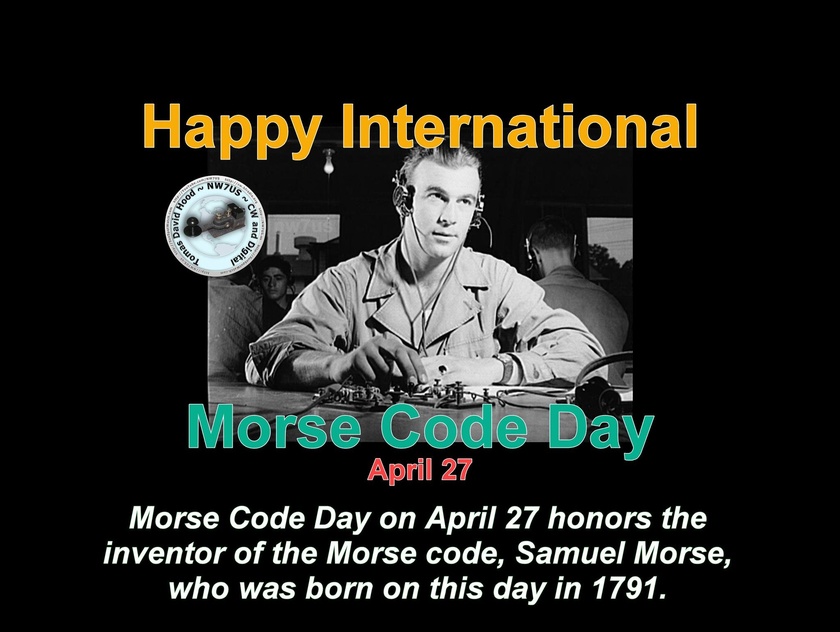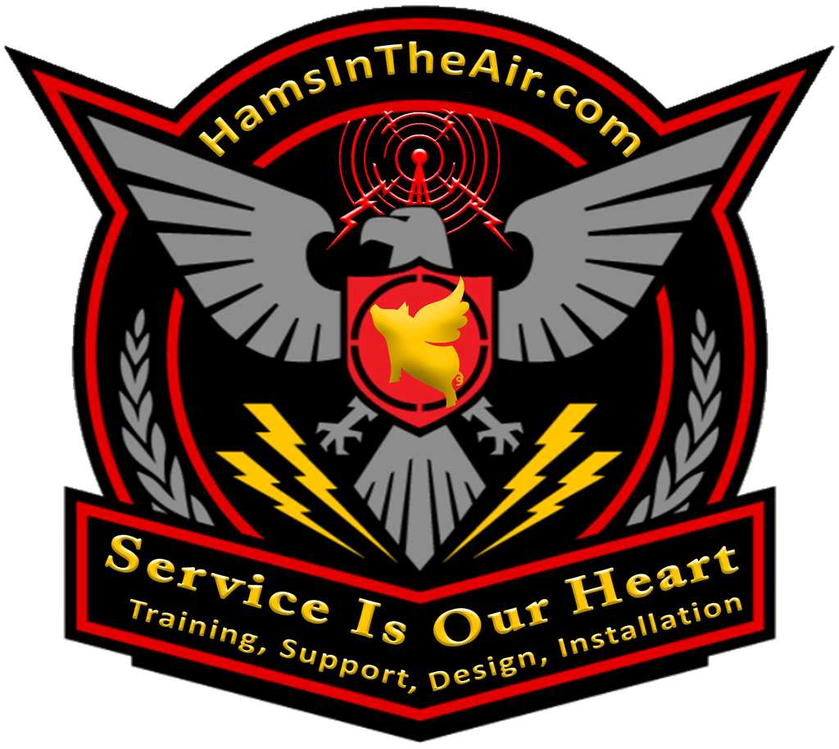
Amateur radio, also known as ham radio, is the use of radiofrequency spectrum for purposes of non-commercial exchange of messages, wireless experimentation, self-training, private recreation, radiosport, contesting, and emergency communication. The term "amateur" is used to specify "a duly authorized person interested in radioelectric practice with a purely personal aim and without pecuniary interest;" (either direct monetary or other similar rewards) and to differentiate it from commercial broadcasting, public safety (such as police and fire), or professional two-way radio services (such as maritime, aviation, taxis, etc.).
The amateur radio service (amateur service and amateur-satellite service) is established by the International Telecommunication Union (ITU) through the Radio Regulations. National governments regulate technical and operational characteristics of transmissions and issue individual station licenses with a unique identifying call sign, which must be used in all transmissions. Amateur operators must hold an amateur radio license which is obtained by passing a government test demonstrating adequate technical radio knowledge and legal knowledge of the host government's radio regulations.
Radio amateurs are limited to the use of small frequency bands, the amateur radio bands, allocated throughout the radio spectrum, but within these bands are allowed to transmit on any frequency using a variety of voice, text, image, and data communications modes. This enables communication across a city, region, country, continent, the world, or even into space. In many countries, amateur radio operators may also send, receive, or relay radio communications between computers or transceivers connected to secure virtual private networks on the Internet.
Amateur radio is officially represented and coordinated by the International Amateur Radio Union (IARU), which is organized in three regions and has as its members the national amateur radio societies which exist in most countries. According to an estimate made in 2011 by the American Radio Relay League, two million people throughout the world are regularly involved with amateur radio. About 830,000 amateur radio stations are located in IARU Region 2 (the Americas) followed by IARU Region 3 (South and East Asia and the Pacific Ocean) with about 750,000 stations. A significantly smaller number, about 400,000, are located in IARU Region 1 (Europe, Middle East, CIS, Africa).
The many facets of amateur radio attract practitioners with a wide range of interests. Many amateurs begin with a fascination with radio communication and then combine other personal interests to make the pursuit of the hobby rewarding. Some of the focal areas amateurs pursue include radio contesting, radio propagation study, public service communication, technical experimentation, and computer networking.
Amateur radio operators use various modes of transmission to communicate. The two most common modes for voice transmissions are frequency modulation (FM) and single sideband (SSB). FM offers high-quality audio signals, while SSB is better at long-distance communication when bandwidth is restricted.
Radiotelegraphy using Morse code, also known as "CW" from "continuous wave", is the wireless extension of landline (wired) telegraphy developed by Samuel Morse and dates to the earliest days of radio. Although computer-based (digital) modes and methods have largely replaced CW for commercial and military applications, many amateur radio operators still enjoy using the CW mode—particularly on the shortwave bands and for experimental work, such as Earth–Moon–Earth communication, because of its inherent signal-to-noise ratio advantages. Morse, using internationally agreed message encodings such as the Q code, enables communication between amateurs who speak different languages. It is also popular with homebrewers and in particular with "QRP" or very-low-power enthusiasts, as CW-only transmitters are simpler to construct, and the human ear-brain signal processing system can pull weak CW signals out of the noise where voice signals would be totally inaudible. A similar "legacy" mode popular with home constructors is amplitude modulation (AM), pursued by many vintage amateur radio enthusiasts and aficionados of vacuum tube technology.
Demonstrating proficiency in Morse code was for many years a requirement to obtain an amateur license to transmit on frequencies below 30 MHz. Following changes in international regulations in 2003, countries are no longer required to demand proficiency. The United States Federal Communications Commission, for example, phased out this requirement for all license classes on 23 February 2007.
Modern personal computers have encouraged the use of digital modes such as radioteletype (RTTY) which previously required cumbersome mechanical equipment. Hams led the development of packet radio in the 1970s, which has employed protocols such as AX.25 and TCP/IP. Specialized digital modes such as PSK31 allow real-time, low-power communications on the shortwave bands.
Radio over IP, or RoIP, is similar to Voice over IP (VoIP), but augments two-way radio communications rather than telephone calls. EchoLink using VoIP technology has enabled amateurs to communicate through local Internet-connected repeaters and radio nodes, while IRLP has allowed the linking of repeaters to provide a greater coverage area.
Automatic link establishment (ALE) has enabled continuous amateur radio networks to operate on high-frequency bands with global coverage. Other modes, such as FSK441 using software such as WSJT, are used for weak signal modes including meteor scatter and moonbounce communications.
Fast scan amateur television has gained popularity as hobbyists adapt inexpensive consumer video electronics like camcorders and video cards in PCs. Because of the wide bandwidth and stable signals required, amateur television is typically found in the 70 cm (420–450 MHz) wavelength range, though there is also limited use on 33 cm (902–928 MHz), 23 cm (1240–1300 MHz) and shorter. These requirements also effectively limit the signal range to between 20 and 60 miles (30–100 km).
Linked repeater systems, however, can allow transmissions of VHF and higher frequencies across hundreds of miles. Repeaters are usually located on heights of land or tall structures and allow operators to communicate over hundreds of miles using hand-held or mobile transceivers. Repeaters can also be linked together by using other amateur radio bands, landlines, or the Internet.
NASA astronaut Col. Doug Wheelock, KF5BOC, Expedition 24 flight engineer, operates the NA1SS ham radio station in the Zvezda Service Module of the International Space Station. Equipment is a Kenwood TM-D700E transceiver.
Amateur radio satellites can be accessed, some using a hand-held transceiver (HT), even, at times, using the factory "rubber duck" antenna.[22] Hams also use the moon, the aurora borealis, and the ionized trails of meteors as reflectors of radio waves.[23] Hams can also contact the International Space Station (ISS) because many astronauts are licensed as amateur radio operators.[24][25]
Amateur radio operators use their amateur radio station to make contacts with individual hams as well as participating in round-table discussion groups or "rag chew sessions" on the air. Some join in regularly scheduled on-air meetings with other amateur radio operators, called "nets" (as in "networks" ), which are moderated by a station referred to as "Net Control". Nets can allow operators to learn procedures for emergencies, be an informal round table, or cover specific interests shared by a group.
Amateur radio operators, using battery- or generator-powered equipment, often provide essential communications services when regular channels are unavailable due to natural disasters or other disruptive events.
Many amateur radio operators participate in radio contests, during which an individual or team of operators typically seek to contact and exchange information with as many other amateur radio stations as possible in a given period of time. In addition to contests, a number of Amateur radio operating award schemes exist, sometimes suffixed with "on the Air", such as Summits on the Air, Islands on the Air, Worked All States, and Jamboree on the Air.
Amateur radio operators may also act as citizen scientists for propagation research and atmospheric science.
Please introduce yourself by sharing your amateur radio call sign, and what activities you find most interesting and enjoyable in this radio hobby.
Again, welcome!

Morse Code Day on April 27 (every year) honors one of the inventers of the Morse code, Samuel Morse, who was born on this day in 1791.
Samuel Finley Breese Morse (April 27, 1791 – April 2, 1872) was an American inventor and painter. After having established his reputation as a portrait painter, in his middle age Morse contributed to the invention of a single-wire telegraph system based on European telegraphs. He was a co-developer of Morse code and helped to develop the commercial use of telegraphy.
Alfred Vail developed the dot-dash structure and Leonard Gale along with Vail was instrumental in developing the mechanical receiving apparatus for code.
Samuel Morse though gets most of the credit because of his work in promoting this code as a viable means of communication, that is still used now. Amateur radio is one of the communities in which Morse code is popular and in daily use.
73 de NW7US dit dit
https://NW7US.us

I used to post amateur radio videos to my YouTube channel, but then life got in the way. Well, I'm coming back to it.
I posted my new, latest video to YouTube:
#hamr #hamradio #amatradio #amateurradio #amateur #ham #radio #videos #youtube #youtuber #YouTubers #hobby #kitten #cat #feline #pet













